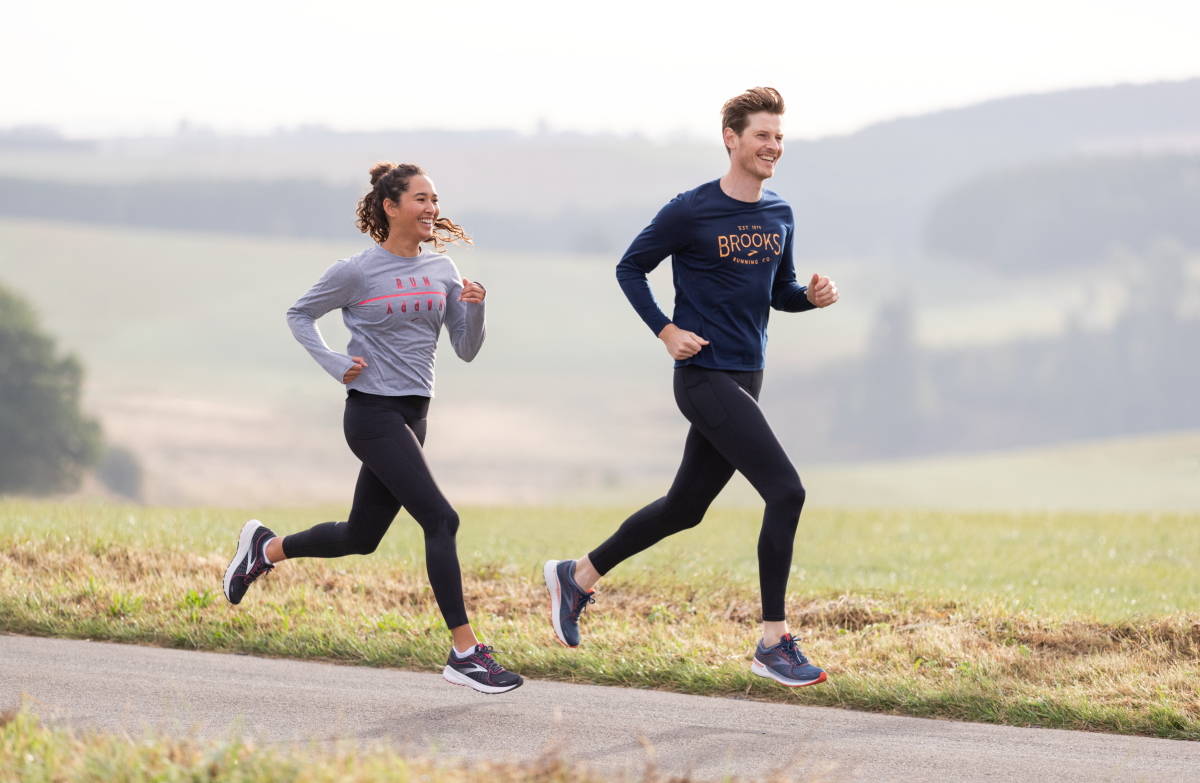Winterzeit = Grundlagenzeit. Diese Trainings-Weisheit ist allseits bekannt und wird doch zu selten richtig umgesetzt. Also was ist eigentlich „Grundlage“ im Triathlon?
Im Rahmen der ganzjährigen Trainingsperiodisierung ist das Grundlagentraining in der Vorbereitungsperiode 1 die Basis für alle darauf aufbauenden Trainingsphasen. Wie der Name schon sagt, geht es darum, das Fundament für den optimalen Formaufbau zu legen. Doch viel zu häufig wird „Grundlage“ mit dem monotonen Abspulen von Trainingskilometern auf einem niedrigen bis mittleren Intensitätsniveau gleichgesetzt. Doch "Grundlage" beinhaltet deutlich mehr als nur das. In der Sportwissenschaft werden unter dem Begriff Kondition nicht nur Ausdauerfähigkeiten, sondern ebenso Kraft, Schnelligkeit und Beweglichkeit zusammengefasst.
Darum geht es:
Grundlagentraining beinhaltet einen umfassenden Ansatz, der die Verbesserung allgemeinen Leistungsvoraussetzungen zum Ziel hat:
- mit einem verbesserten Fettstoffwechsel steigst Du in das spezifische Training auf einem viel höheren Ausdauerlevel ein
- eine verbesserte Rumpfstabilität verhilft Dir beim Schwimmen zu einer stabileren Wasserlage, beim Radfahren zu einer effektiveren Sitzposition, beim Laufen zu einer effizienteren Lauftechnik
- eine gut ausgeprägtes muskuläres Korsett stabilisiert den passiven Bewegungsapparat, entlastet Knochen, Gelenke, Knorpel und Bänder
- eine gute Mobilität in der Schulter harmonisiert Deine Schwimmtechnik, Du verhinderst dadurch Ausgleichbewegungen, die Deine Wasserlage negativ beeinflussen
- verbesserte sensomotorische Fähigkeiten erhöhen Deine Grundschnelligkeit, Du kannst "motorische Barrieren" durchbrechen, die sich aufgrund der monotonen Bewegungsstrukturen in den Einzeldisziplinen einstellen
- eine normale Dehnfähigkeit und die Auflösung von muskulären Verkürzungen sind der Schlüssel für schmerzfreie und effiziente Bewegungsausführungen in allen Disziplinen.
Insgesamt wirst Du also dadurch besser, indem Du Dein allgemeines sportliches Grundniveau auf ein höheres Level hebst und dadurch das folgende spezifische Ausdauertraining:
- besser umsetzen und effektiver gestalten kannst
- weniger verletzungsanfällig bist
Wichtig zu wissen: Grundlagentraining ist nachhaltig! Viel nachhaltiger als zum Beispiel "Intervalle zu schrubben". Intervalle sind kurzfristige Leistungsbooster - nach kurzer Zeit ist der Effekt verflogen. Durch Grundlagentraining schaffst Du aber eine Basis, von der Du über Monate und Jahre profitierst. Daher ist das Grundlagentraining ein ständig begleitender und auch wiederkehrender Prozess.
Also: gerade jetzt im Winter solltest Du Dich nicht nur der reinen Ausdauerleistung, sondern ebenso Technik, Kraft, Schnelligkeit und koordinativen Fähigkeiten widmen. Hierfür zeigen wir Dir nun die Zielstellungen für jeden Bereich:
Ausdauer
Im Grundlagentraining ist das übergeordnete Ziel die Verbesserung des Fettstoffwechsels und der Bewegungsökonomie. Diese Verbesserung findet vorwiegend auf einem niedrigem bis moderatem Intensitätsniveau statt. Doch sollte das Training nicht nur auf lange, ruhige Dauerläufe reduziert werden. Das Hinzufügen von Technik- und Tempoelementen durchbricht die Bewegungsmonotonie und sorgt auch für differenzierte Belastungsreize. Beispiel langer Dauerlauf: integriere alle 20 min 3x100m Steigerungsläufe, laufe Treppen oder Steigung mit Druck hoch, mache am Ende des Laufs 6x30m Lauf-ABC Übungen.
Kraft- und Stabilisationstraining
“Muskeln sind schwer und machen langsam” ist ein häufiges Argument gegen Krafttraining, doch darum geht es gar nicht. Im Rahmen des Krafttrainings gibt es zwei Aspekte, auf die man sich fokussieren sollte: 1.) allgemeines Athletik-/Stabitraining - die positiven Effekte haben wir weiter oben bereits dargestellt. 2.) Entwicklung spezifischer Muskulatur (Muskelausdauer) für die Einzeldisziplinen (z.B. Zugseiltraining ergänzend für das Schwimmen) - wichtig dabei auch immer die muskulären Gegenspieler (Antagonisten) mitzutrainieren, um Dysbalancen vorzubeugen. Das Krafttraining kann daher sehr vielfältig gestaltet werden: zu Hause auf der Yoga Matte, im Fitnessstudio, im Freien, mit dem eigenen Körpergewicht, mit Zusatzgewichten...
Schnelligkeitstraining
Schnelligkeitstraining ist ein sehr wichtiger Aspekt und wird im Triathlon viel zu wenig berücksichtigt. Auch hierbei geht es nicht vordergründig darum, neue Sprintrekorde aufzustellen, sondern vor allem um die Verbesserung Deiner Motorik. Durch die sich ständig wiederholenden Bewegungszyklen kommen viele Sportler gar nicht mehr aus ihrer monotonen Bewegungsmotorik heraus. Durch Schnelligkeitstraining lernt Dein Körper, motorische Barrieren zu durchbrechen und sich auf einem dynamischeren Aktivierungsniveau zu bewegen. Auch für die Verbesserung der Lauftechnik sind kurze Sprintübungen sehr wertvoll (aktiver Fußaufsatz, dynamischer Fußaufsatz & Bodenkontakt, Kniehub, etc.). Auf dem Rad schulen Sprints und Trittfrequenzintervalle das komplexe muskuläre Zusammenspiel im Bein und damit den runden Tritt. Beim Schwimmen helfen Dir kurze Maximalsprints (10-25m) die Arm- und Beinbewegung zu besser koordinieren und eine deutlich höheres muskuläres Aktivierungsniveau zu erreichen.
Beweglichkeitstraining
Jetzt mal Hand aufs Herz: dehnst Du regelmäßig? Gibst Du Deiner Muskulatur nach den Trainingseinheiten die Möglichkeit, den Tonus herunterzufahren und sich zu entspannen? Die meisten Athleten tun das unregelmäßig, selten, gar nicht. "Keine Zeit dafür" ist die häufigste Ausrede. ABER: muskuläre Verkürzungen und/oder eingeschränkte Gelenkbeweglichkeit sind leistungsbegrenzende Faktoren - verstärktes Krampfrisiko, eingeschränkte Bewegungsausführung, höheres Verletzungsrisiko. Also nimm Dir die Zeit - gerade dafür ist das Grundlagentraining da.
Die Beweglichkeit setzt sich aus der Gelenkbeweglichkeit und der Dehnungsfähigkeit zusammen. Eine mangelnde Dehnungsfähigkeit hat starke Einschränkungen auf viele Bewegungsausführungen:
- verkürzter Hüftbeuger (schlechte Lauftechnik)
- verkürzte Rückenmuskulatur (schlechte/schmerzhafte Sitzposition)
- mangelhafte Schulter- und Knöchelbeweglichkeit (schlechte Schwimmtechnik)
Deshalb empfiehlt es sich, längere und/oder intensivere Trainingseinheiten "nachzubereiten", den hohen Muskeltonus herunterzufahren die verklebten Fasern zu entspannen. Wichtig dafür: Dehnpositionen sollten dafür mind. 45 Sekunden gehalten werden, erst dann löst sich die Aktivierung und der Muskel entspannt sich. Dadurch wird die Trainingsqualität erheblich gesteigert und auch die Regeneration maßgeblich gefördert. Zusätzlich ist auch der Einsatz der Blackroll empfehlenswert.
Fazit
Grundlagentraining ist vielfältig, Du bereitest Deinen Körper umfassend auf die folgenden Trainingsbelastungen vor. Du baust damit das Fundament Deiner Leistungsfähigkeit auf - nicht nur für eine Saison, sondern langfristig.





















1 Kommentar
Thomas Krapf
Toller Kurzartikel über das Grundlagentraining. Sehr hilfreich!!